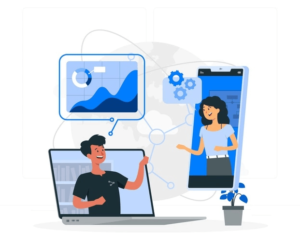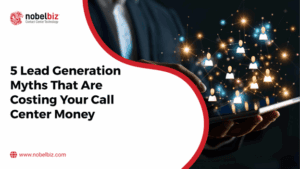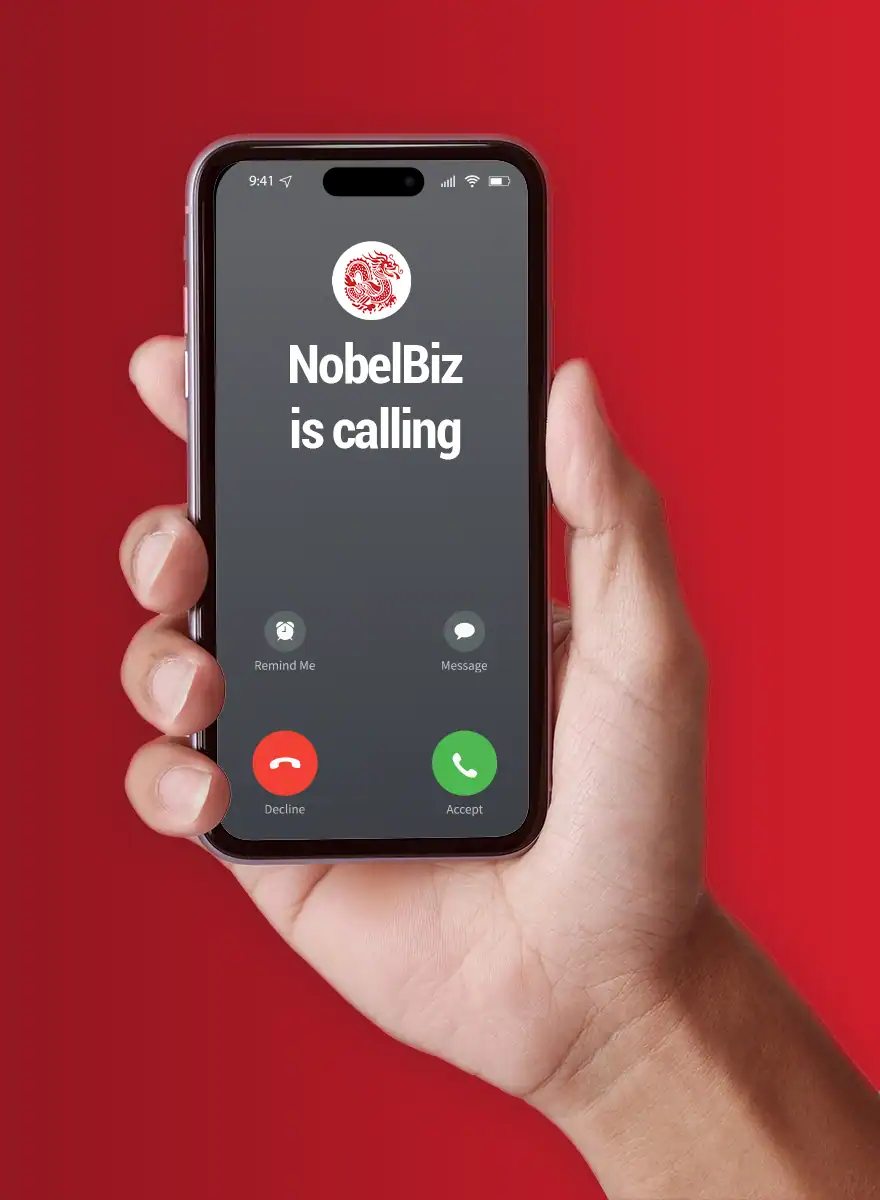The telephone is still the most common way to get in touch with a company. On the business side, there are various issues associated with managing a massive volume of calls. Many contact centers must develop methods and use their resources to manage client expectations and create a pleasant customer experience.
According to Gartner, Inc., by 2022, 50% of major enterprises would have failed to combine interaction channels, resulting in a disconnected and walled customer experience devoid of context. However, for contact centers increasing the usage of digital channels presents a business opportunity. They make agents’ and customers’ lives simpler by streamlining the contact process. Nonetheless, maintaining many channels is complicated, and developing a smooth customer journey is a significant problem. Indeed, the major difficulty for customer service is to create a consistent experience across all touchpoints. As a result, call deflection plays a critical role in contact centers for this transition.
Call deflection: A new tool for improving consumer and agent experience
 Call deflection is becoming a common way to provide a smooth customer journey. It is the practice of redirecting a phone call to another channel, most typically a digital communication channel. Call deflection has various advantages for both businesses and users. Indeed, it optimizes internal resources, improves cost distribution, lowers the time it takes to contact an adviser, and enhances customer satisfaction by making the customer’s experience more fluid.
Call deflection is becoming a common way to provide a smooth customer journey. It is the practice of redirecting a phone call to another channel, most typically a digital communication channel. Call deflection has various advantages for both businesses and users. Indeed, it optimizes internal resources, improves cost distribution, lowers the time it takes to contact an adviser, and enhances customer satisfaction by making the customer’s experience more fluid.
Call deflection can function in a variety of ways. When a consumer contacts your organization, you may provide him an alternate route via which he can find a response to his problem, based on the cause for the call, the workload of your teams, and other external and internal considerations. SMS, e-mail, live chat, chatbot, there are many suitable alternate channels. Call deflection aims to prioritize requests by treating some of them differently.
It can be used on the following channels:
- SMS: Due to its versatility, it is frequently used for call deflection. SMS is a dependable, rapid communication channel that can include text and links and does not need mobile data.
- Facebook Messenger is one of the most popular commercial messaging platforms. Its features, such as m.me links and customer matching, aid in call deflection strategies.
- WhatsApp: A verified account allows companies to engage with their consumers. WhatsApp will enable companies to authenticate that a consumer is registered on that channel and get their ID for call deflection.
This method of enhancing client interactions offers several advantages. It is not a basic call forwarding or terminal redirection but an approach tailored to certain motives. Specific processes, such as payment or debt collections, are significantly more efficient via digital channels than telephone exchanges.
Numerous contact center leaders and experts have heard of the omnichannel approach. However, few have a solid grasp on how to monetize the omnichannel business model in the context of a contact center. This webinar is intended for contact center executives investigating omnichannel technologies. Learn more about what it takes to transition from Voice-only to an omnichannel solution and how it can help a contact center expand its scope beyond the comfort zone of voice-only interactions.
Call Deflection tactics & strategies for contact centers
The call deflection strategy is motivated by the need to avoid jeopardizing the customer’s well-being, improve the client-company relationship, and enhance the overall processes of your campaigns. Here are some tactics and strategies that can be applied with call deflection in contact centers:
1. Call peaks, Overload management, and call center shutdown
Call deflection is used to avoid losing prospective customers during high volume phone calls and call center closures. Missed calls during the shutdown of the contact center, for example, can be a significant loss of profit for remote sales organizations. In this scenario, call deflection may divert the user to a form where he can be called back. As a result, every day during the opening hours, an outbound phone campaign may be created to process the missed orders the day before.
In the case of regular call peaks (e.g., end-of-year festivities, holidays, Black Friday, etc.), call deflection can help you manage the call overload without the need for extra staff. It enables you to address consumer demands while optimizing your internal resources.
2. Screen inbound leads
It is feasible to employ call deflection to qualify incoming leads. Many contact centers have selected this approach to handle requests for their inbound campaigns. Using a traditional Interactive Voice Server was not an option for organizations since the number of interactions would have been excessive. As a result of the call deflection, when a client calls your contact center, he is led through SMS to a URL where he may qualify his request.
Then this client is gradually asked to explain the reason for his request and the type of product or service he is using. After gathering the essential information, he is directed to the most skilled agents that have the appropriate abilities to handle his request. Consequently, calls are more qualified, and client’s experience is improved since they spend less time going through a classical IVR.
Because inbound campaigns are employed in a variety of specializations and verticals throughout the contact center sector and beyond, the conversation must be both broad and approachable, concentrating on common themes. Our webinar series will show you the best practices and optimization techniques for inbound campaigns. Additionally, learn how to demonstrate innovative technologies that may significantly enhance incoming process and KPIs.
3. Increased debt collection productivity
Call deflection can also help with receivables collection. The observation is that it is not required to employ an agent for credit card entry when users do it themselves. Many consumers do not need assistance throughout the payment process.
When clients call the firm to pay their bills, it is more appropriate to suggest obtaining a secure payment link through SMS or email rather than contact an agent. However, owing to an Interactive Speech Server, it is also feasible to manage debt collection via voice without an agent. In this scenario, the client is directed to enter his bank information on his phone’s keypad. Many clients can pay the expected sums on their own. As a result, contacting an agent becomes the final step in the collecting process. This minimizes the number of agents needed to deal with this type of inquiry.
4. Proactive Customer communication
 It enhances the client experience and increases efficiency while lowering prices. This is the goal of call deflection, as it involves redirecting a customer’s call to another channel, such as email, live chat, or messaging. Along with alleviating the aggravation associated with lengthy telephone wait times, it enables the exchange to be routed to the most appropriate method of communication.
It enhances the client experience and increases efficiency while lowering prices. This is the goal of call deflection, as it involves redirecting a customer’s call to another channel, such as email, live chat, or messaging. Along with alleviating the aggravation associated with lengthy telephone wait times, it enables the exchange to be routed to the most appropriate method of communication.
Customers must acquire the response or information they need when they need it for a call deflection strategy to be successful. Companies can remain ahead of the curve with proactive customer communication by establishing automated communications to deliver information to customers before they ever pick up the phone.
Messages must be received and read to be effective, just like any other communication method. As a result, businesses must carefully select the technology and communication channels they will employ.
5. Enhanced Customer Service
When it comes to customer service, speed and responsiveness are two factors that contact centers must consider when developing their customer satisfaction strategy. The time spent with a consultant to obtain the desired information is also a customer service issue. A query to which the deviation of calls is a response, mainly through integrating technological solutions such as skill-based routing capable of directing requests in real-time.
Also, it is crucial to note that most consumers prefer getting in touch with a live agent to fix difficulties in an emergency. While most calls are not deemed emergencies, this highlights the significance of freeing up agent time so they may focus on the most complicated and urgent issues.
Contact Centers can provide adequate customer service by using the right technologies and responding to consumer questions through the proper communication channels.
Conclusion: What should you know about call deflection
 Call deflection must be considered as part of an open redirection plan. It is vital to optimize its execution without becoming an impediment to the customer’s journey. It is critical to surround yourself with customer relations professionals to guarantee that it is fully integrated and becomes a meaningful opportunity for your consumers.
Call deflection must be considered as part of an open redirection plan. It is vital to optimize its execution without becoming an impediment to the customer’s journey. It is critical to surround yourself with customer relations professionals to guarantee that it is fully integrated and becomes a meaningful opportunity for your consumers.
In a nutshell, call deflection allows you to give appropriate and alternative options to contact center agents. The purpose of call deflection is to minimize contact time, fluidify the customer connection, and reduce company costs.
Most importantly, call deflection is an alternate solution to problems well incorporated into the customer experience. It is critical to remember that the consumer has the right to pick his route. If they want to use another route, they can change to a consultant at any time. The fundamental goal remains to address the consumer’s demands through his preferred channel.
In that regard, NobelBiz is the only telecom carrier built from the bottom up to handle significant call center traffic, complemented with an industry-leading omnichannel cloud contact center solution and proprietary support methods that distinguish us as the industry’s promise keepers.
With our cloud call center software NobelBiz Omni+, your contact center can provide an intuitive and efficient agent team to your clients across all communication platforms. By allowing your agents to communicate with your consumers via their preferred methods of communication (voice, webchat, email, SMS, and social media). From the initial encounter, you can anticipate your clients’ needs and deliver an exceptional customer experience.

Abdelmounim Benharouga has always had a strong passion for writing and digital marketing. He started as a Digital Content Writer part of marketing department then moved to being Customer Success Manager for the African Region within the Nobelbiz team.









